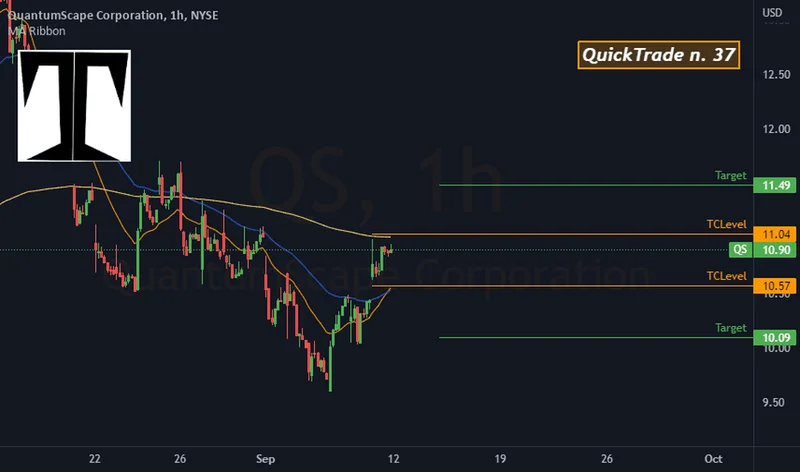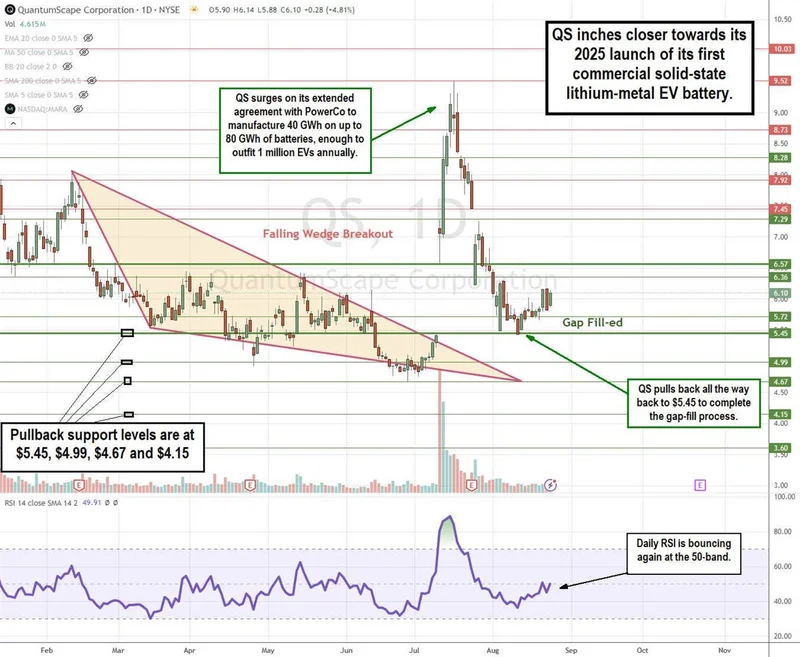Article Directory
I’ve spent my life studying the moments when the future stops being a distant concept and becomes a tangible reality. These moments are rare. They’re not just about a new product or a rising stock price; they’re about a fundamental shift in what we believe is possible. We’re living through one of those moments right now, and its name is QuantumScape.
For years, the idea of a solid-state battery has been the holy grail of the energy world—a technology that promised to make electric vehicles charge as fast as you fill a gas tank, run for hundreds of miles more, and be safer than anything on the road today. It was a beautiful promise, but it always felt like it was five years away.
Until now.
What we’ve seen in the last few weeks isn’t just a speculative stock rally; it’s the market frantically trying to price in a paradigm shift. The chatter, the excitement, the 170% year-to-date surge in QuantumScape’s stock—it’s all a lagging indicator of a much deeper truth: the blueprint for our electric future is finally being translated from the whiteboard into the real world.
The Spark Becomes a Flame
It’s one thing to read about a breakthrough in a research paper. It’s another thing entirely to see it in action. At the Munich auto show, Volkswagen wheeled out a Ducati electric race motorcycle. As it sat there under the bright lights of the convention hall, it looked sleek, but it was what was inside that mattered. It was powered by QuantumScape’s latest prototype cells.
And the performance was staggering. An energy density of 844 Wh/L—that’s a measure of how much power you can pack into a given space—and a charge time of 10% to 80% in about 12 minutes. Let that sink in. Twelve minutes. That’s the time it takes to grab a coffee. This wasn't just a lab test; it was a demonstration that the core promise of solid-state technology is achievable. When I saw the specs from that Ducati demo, I honestly just felt this jolt of excitement. This is the kind of leap that reminds me why I fell in love with technology in the first place.
So what makes this technology so different? It’s all about the architecture. Current lithium-ion batteries use a liquid electrolyte and a polymer separator—in simpler terms, it’s like a wet, flimsy paper towel separating the positive and negative sides. QuantumScape’s breakthrough is a flexible, solid ceramic separator. Think of it as replacing that wet paper towel with a slice of material that’s impossibly thin yet incredibly strong. This solid barrier is what unlocks the use of a pure lithium-metal anode, which is the key to that incredible energy density and lightning-fast charging. It’s a fundamentally more elegant and powerful design.

But a great design is meaningless if you can’t build it. For years, the biggest question hanging over QuantumScape, and the entire solid-state field, has been one of scale. Could you ever manufacture these delicate ceramic separators reliably and cheaply enough for millions of cars?
Building the Bridge from Lab to Life
This is where the story shifts from a scientific discovery to an industrial revolution. On September 30th, QuantumScape announced a strategic partnership with Corning Inc. Yes, that Corning—the materials science giant behind the Gorilla Glass on your smartphone.
This partnership is the single most important development in the company’s history. It’s like a brilliant architect who designed the world’s most advanced skyscraper finally teaming up with the world’s best construction firm. The blueprint was always genius, but now the skyscraper can actually be built. Corning doesn't bet on science projects; it bets on scalable, world-changing manufacturing platforms. This alliance is a massive vote of confidence that QuantumScape’s technology is not just viable, but manufacturable, a sentiment that was quickly reflected in the market as detailed by Why QuantumScape Stock Zoomed Up 55% in September and Just Hit a 52-Week High.
They’re already making incredible progress. The company’s new "Cobra" production process has boosted the output of its pilot line by a factor of 200x compared to early 2023. This is the part that truly matters because it means we're not just talking about a boutique technology for a few race bikes, we're talking about the foundation for a global manufacturing ecosystem that could put these batteries in millions of cars, trucks, and maybe one day even planes—it’s the industrialization of a dream.
Of course, Wall Street remains skeptical. I’ve seen the analyst reports with their “Sell” ratings and their $5 price targets. They point to the fact that QuantumScape has no revenue and a $9 billion valuation. They see a spreadsheet, and on that spreadsheet, the numbers don’t add up today. But this is a classic case of missing the forest for the trees. Asking about QuantumScape’s current price-to-earnings ratio is like asking about the P/E ratio on the invention of the printing press in 1441. It’s the wrong question. The right question is: What is the value of a technology that could fundamentally rewire the trillion-dollar automotive and energy industries?
We’ve seen this movie before. In the early days of the microchip, people saw a niche product for calculators and government mainframes. They couldn’t imagine the personal computer, the internet, or the smartphone. They were analyzing the seedling, not the forest it would become. The skepticism today is the same kind of failure of imagination.
What this technology represents is a step-change in freedom. The freedom to travel 500 miles on a single charge. The freedom to refuel your car in minutes, not hours. For us, as a society, it represents a credible path toward energy independence and a transportation system that doesn’t choke our planet. Can we even begin to calculate the value of that?
The Physics of Progress
Let’s be clear. The road ahead for QuantumScape is still incredibly difficult. The challenges of scaling production are immense, and the risks are real. But for the first time, the path from lab to life is illuminated. What was once a question of "if" has become a question of "when." With this kind of technology comes an enormous responsibility—a responsibility to ensure that this new energy paradigm is built equitably and sustainably. But the potential is undeniable. This isn't just about a better battery. It’s about unlocking the next phase of human mobility. It’s about building a cleaner, faster, and more efficient world. The physics are proven. The engineering is underway. Now, all we have to do is build it.




